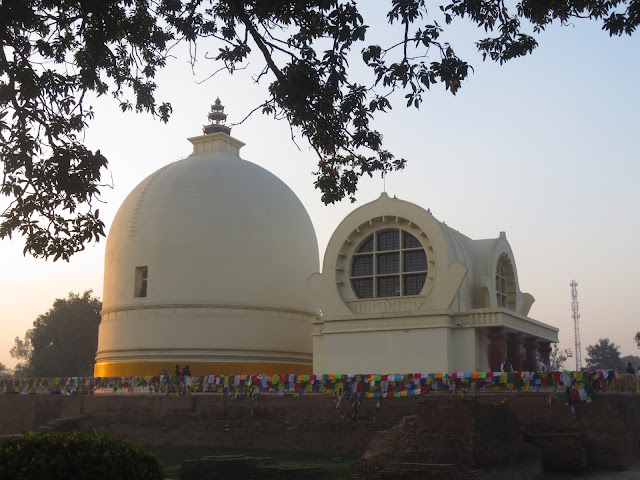Shwedagon Paya, Yangon (Myanmar)
While the once-official English name ‘Burma’ immediately
conjures, for some in the West, Asia and adventure, the name that this country
has taken on since 1989 – Myanmar – may still sound unfamiliar to many a Westerner.
Or it may call to mind images of dictatorship, and the figure of Aung San Suu
Kyi, the former opposition leader who is now State Counselor of the country.
Her recent handling of the Rohingya crisis (the Rohingyas being a Muslim
minority in Myanmar), however, has been heavily criticised. Considering she is
a Buddhist, and Buddhism is the main religion here, the failure has
disappointed both Buddhists and non-Buddhists around the world, as tolerance, nonviolence
and compassion are the very foundations of Buddhism.
However, Myanmar is more than the sum
of her problems, be they of an economic or ethnic nature. One finds here still
a widely acknowledged gentleness and honesty in her people, and monuments of a
singular beauty. A largely poor nation that preserves an ancient traditional
culture, it is only now opening up to external influences – including from both
China (one of its key trade partners) and the West – good and bad (perhaps more
the latter than the former).
At the beginning of November, taking
advantage of the mid-semester break at the University, I finally have the
opportunity to visit this country I had longed to see for the longest time. Of the
Southeast Asian nations, it is situated furthest west, wedged between India and
Bangladesh on one side, and China, Laos and Thailand on the other.
I arrive in Yangon, formerly Rangoon,
in the late afternoon, after a flight of a little over two hours from Kuala
Lumpur. The first thing that strikes me is the local time: not one or two hours
behind Malaysian time, but one and a half... In the taxi taking me to my guesthouse,
I realise I am once again in Southeast Asia at its most ‘exotic’, in conditions
akin to what I had observed in Java or Cambodia: ramshackle cars, buses,
lorries and pick-ups turned into minibuses lurching from every side, overtaking
and dodging each other left and right; people in the middle of roads, trying to
cross, with vehicles swerving to avoid mishaps; bicycles and rickshaws
everywhere.
Missing in Yangon are carts drawn by
oxen, common in the countryside, and motorbikes, the latter having been
forbidden by the government. But I will find them again in Mandalay. The
majority of Burmese I see on the streets wear longyi instead of
trousers, a kind of long traditional skirt tied in front by men and on the side
by women, some of whom have their faces covered with thanaka, a yellowish
cream made of ground tree bark. Just a two-hour airplane ride away from the
more westernised Malaysia I have left behind, and what a difference! The contrast
is similar to what I experienced when arriving by ferry from Spain in Morocco,
or from Sicily in Tunisia.
I take a small room for nine dollars a
night (the American dollar is used here, alongside the local kyat: about 70
kyat to the dollar being the rate at the time). From the window of my room, the
gold-covered stupa of the Shwedagon Paya shines in the distance. After trying
to send a few SMS messages in vain (in 2011 there was no roaming in Myanmar,
and the Internet was still exasperatingly slow), I finally step out to breathe in
the air of this city. The streets are full of people, shops, stalls, and small
tables on dilapidated pavements selling everything from fresh drinking water to
betel and areca nut, which reddens the mouth and is widespread in many areas of
Southern Asia. A small slice of the nut is wrapped up in a betel leaf dabbed
with lime; the whole thing is then held in one’s mouth and, once softer, chewed
and swallowed. Mildly stimulating, it is considered a good digestive, with
antiseptic properties. I find my way to Little India to have dinner, where I have
a chat with a Pakistani boat engineer who shuttles between India and Myanmar.
The following morning, after a nourishing breakfast, I head on foot towards Shwedagon Paya, the most important Buddhist temple in the entire country...
 |
| Shwedagon Paya |








Comments
Post a Comment